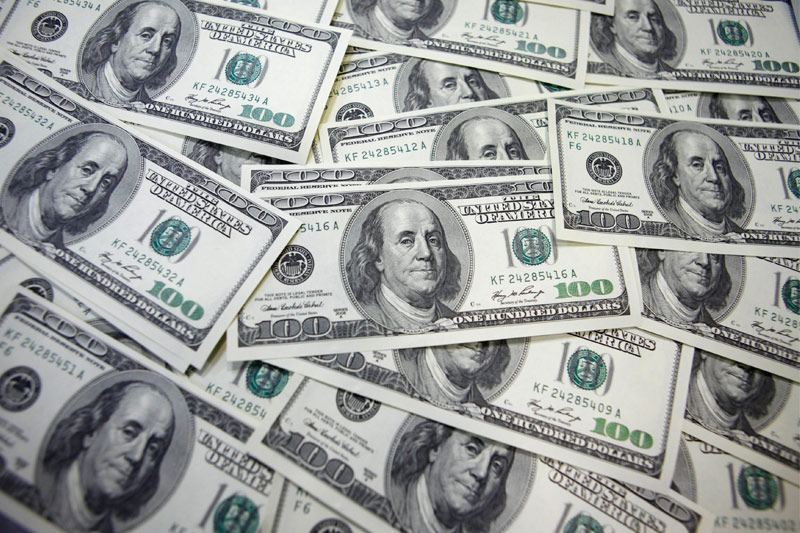Investing.com - The dollar weakened slightly in U.S. trading on Tuesday after fears of a pending U.S. military attack on Syria began to wane after a Russian-proposed diplomatic solution appeared to gain footing and spark demand for risk-on asset classes.
In U.S. trading on Tuesday, EUR/USD was up 0.10% at 1.3268.
Syria's reported willingness to give up control of its chemical weapons stockpiles sparked demand for higher-yielding asset classes Tuesday as fears subsided the U.S. would attack.
While the Obama administration has pressed its case for military strikes on the assumption that Damascus used chemical weapons in its civil war, polls show most Americans do not favor attacking Syria.
The U.S. has said it would explore Russia's proposal, which enticed investors out of the safety of the greenback as did upbeat data out of China.
Chinese industrial production rose 10.4% in August, beating expectations for a 9.9% increase and accelerating from a 9.7% gain in July.
Earlier this week, China reported that its exports grew 7.2% year-over-year in August, up from 5.1% in July, which painted a picture of an improving global economy.
The dollar also came under pressure due to ongoing uncertainty over Federal Reserve policies.
The U.S. economy added 169,000 jobs in August, the Bureau of Labor Statistics revealed on Friday, less than market calls for a 180,000 increase.
The data continued to fuel sentiments that the Federal Reserve may hold off on announcing plans to begin winding down its USD85 billion in monthly bond purchases at its Sept. 17-18 policy meeting.
Still, the dollar saw some support over the Syria impasse, especially among those investors who sought safety in gold during the crisis.
Gold futures for December delivery traded at USD1,364.20 during U.S. afternoon hours, down 1.62%, which gave the dollar some support as the two assets tend to trade inversely with one another.
Elsewhere, the greenback was up against the pound, with GBP/USD up 0.25% at 1.5733.
The dollar was up against the yen, with USD/JPY up 0.76% at 100.34, and up against the Swiss franc, with USD/CHF trading up 0.24% at 0.9346.
The dollar was down against its cousins in Canada, Australia and New Zealand, with USD/CAD down 0.26% at 1.0349, AUD/USD up 0.94% at 0.9315 and NZD/USD trading up 0.66% at 0.8070.
The dollar index, which tracks the performance of the greenback versus a basket of six other major currencies, was down 0.01% at 81.82.
In U.S. trading on Tuesday, EUR/USD was up 0.10% at 1.3268.
Syria's reported willingness to give up control of its chemical weapons stockpiles sparked demand for higher-yielding asset classes Tuesday as fears subsided the U.S. would attack.
While the Obama administration has pressed its case for military strikes on the assumption that Damascus used chemical weapons in its civil war, polls show most Americans do not favor attacking Syria.
The U.S. has said it would explore Russia's proposal, which enticed investors out of the safety of the greenback as did upbeat data out of China.
Chinese industrial production rose 10.4% in August, beating expectations for a 9.9% increase and accelerating from a 9.7% gain in July.
Earlier this week, China reported that its exports grew 7.2% year-over-year in August, up from 5.1% in July, which painted a picture of an improving global economy.
The dollar also came under pressure due to ongoing uncertainty over Federal Reserve policies.
The U.S. economy added 169,000 jobs in August, the Bureau of Labor Statistics revealed on Friday, less than market calls for a 180,000 increase.
The data continued to fuel sentiments that the Federal Reserve may hold off on announcing plans to begin winding down its USD85 billion in monthly bond purchases at its Sept. 17-18 policy meeting.
Still, the dollar saw some support over the Syria impasse, especially among those investors who sought safety in gold during the crisis.
Gold futures for December delivery traded at USD1,364.20 during U.S. afternoon hours, down 1.62%, which gave the dollar some support as the two assets tend to trade inversely with one another.
Elsewhere, the greenback was up against the pound, with GBP/USD up 0.25% at 1.5733.
The dollar was up against the yen, with USD/JPY up 0.76% at 100.34, and up against the Swiss franc, with USD/CHF trading up 0.24% at 0.9346.
The dollar was down against its cousins in Canada, Australia and New Zealand, with USD/CAD down 0.26% at 1.0349, AUD/USD up 0.94% at 0.9315 and NZD/USD trading up 0.66% at 0.8070.
The dollar index, which tracks the performance of the greenback versus a basket of six other major currencies, was down 0.01% at 81.82.
